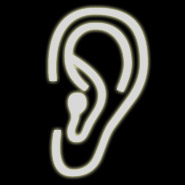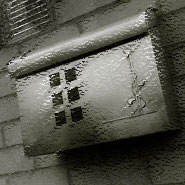Think You’re a Good Listener?
 Somewhere I read this information and it has stuck with me through the years. I always think about it when someone calls about a photography job, but it applies to any sort of sales negotiation. Specifically, it’s the three pitfalls of listening.
Somewhere I read this information and it has stuck with me through the years. I always think about it when someone calls about a photography job, but it applies to any sort of sales negotiation. Specifically, it’s the three pitfalls of listening.
1. Prior experience (read: baggage) prevents us from hearing what we don’t want to hear.
Speaking only for myself, that’s very, very true. It happens most often when someone, in response to my question asking how the images I create will be used, says, “that’s not important, we need a buyout.” That dreaded word: buyout. Your blood pressure rises, you start to shake (well, almost!), your ears shut down and you’re immediately thinking about how to respond. Or how about this… a potential client calls and gives you a list of eight shots she needs, and then tells you, it will take “only a half-day.” Yikes, those emotional filters are kicking in!
2. Bad listeners only pay attention to what they themselves are saying.Instead of listening closely to your counterpart as she tells her story, you might be thinking about what you’re going to say next. Remember when your dad told you to count to ten before you spoke when someone made you mad? In negotiating the rule of thumb is to count to two before you speak. It gives you time to digest what your counterpart just said, and time to compose your response. It helps to s-l-o-w down the conversation so you can remain composed and at your best. You’re also less likely to get off the phone saying to yourself, “If only I had said…”
3. In a negotiation, you think listening is passive.
Nope, it’s just the opposite. Listening is indeed active behavior. Your task in any negotiation is to gather information. There’s an old saying in negotiating, “the person with the most information wins.” If you must speak, ask open-ended questions with the intention of getting still more information from your counterpart in the negotiation. Ask about the details of the job; try to determine what her expectations are of you and your team.
Above my desk I have a small sign that reads:
1. Listen well.
2. Don’t get emotional.
3. Count to two.
4. Listen well.
Good luck!

 In the world of search engine optimization, or SEO, content is king. What I’m talking about is human readable HTML text on your home page.
In the world of search engine optimization, or SEO, content is king. What I’m talking about is human readable HTML text on your home page.  When you’re knee deep in a negotiation with a client, things sometimes can go astray. That’s when perhaps your counterpart in the conversation is hammering you for a price concession, more licensing for less of a fee, etc. Next thing you know, you’re perspiring profusely and your talking faster and faster, starting to sound like Mickey Mouse, all because your emotions are taking over your normally clear thinking.
When you’re knee deep in a negotiation with a client, things sometimes can go astray. That’s when perhaps your counterpart in the conversation is hammering you for a price concession, more licensing for less of a fee, etc. Next thing you know, you’re perspiring profusely and your talking faster and faster, starting to sound like Mickey Mouse, all because your emotions are taking over your normally clear thinking.
 groozi.com is a blog about negotiating and web marketing. Weekly posts are written primarily by me, Blake J. Discher, a
groozi.com is a blog about negotiating and web marketing. Weekly posts are written primarily by me, Blake J. Discher, a 
